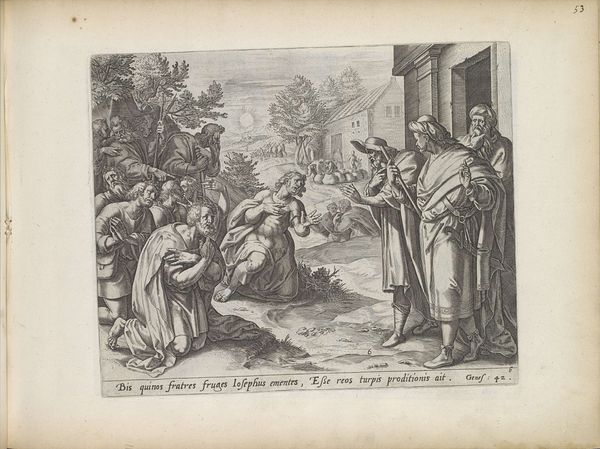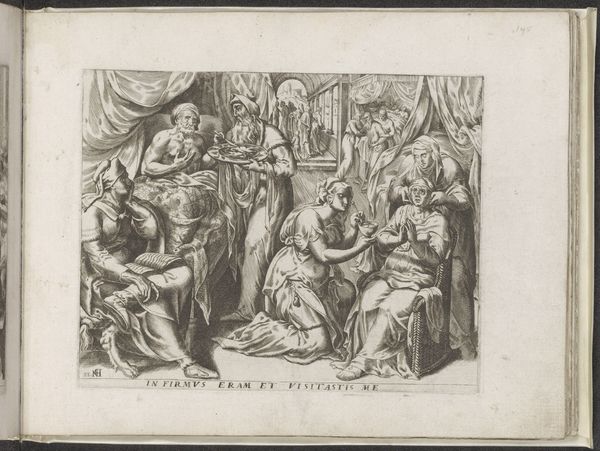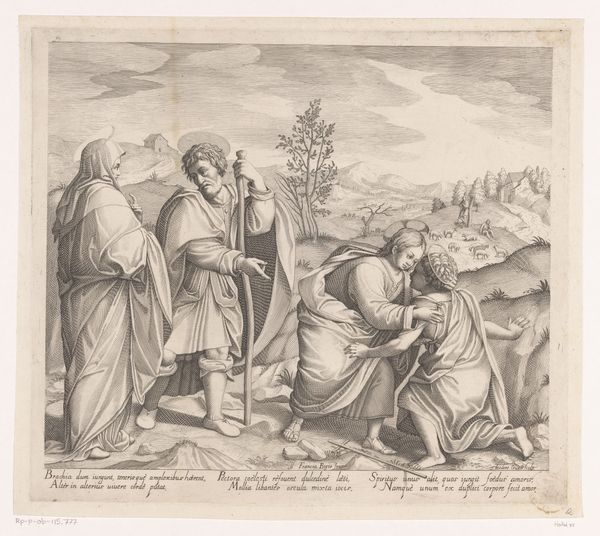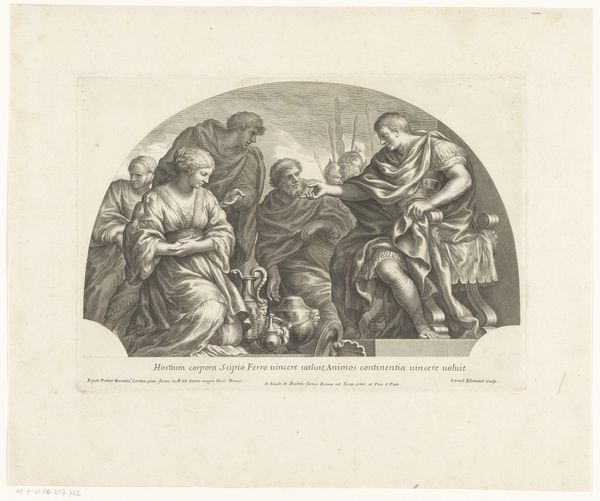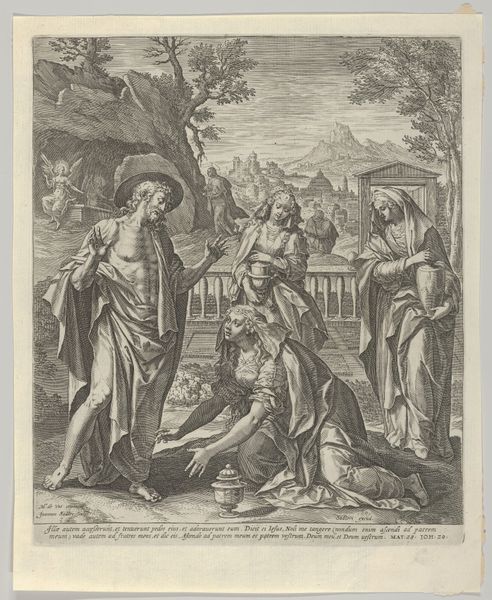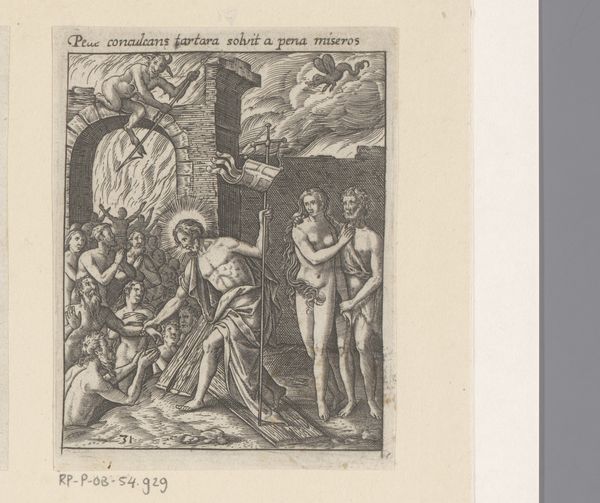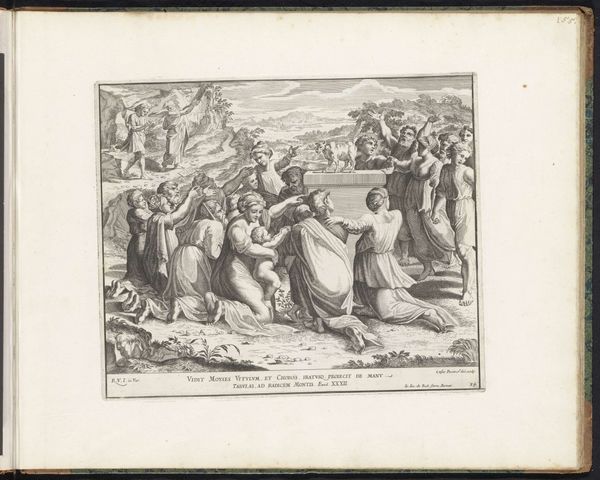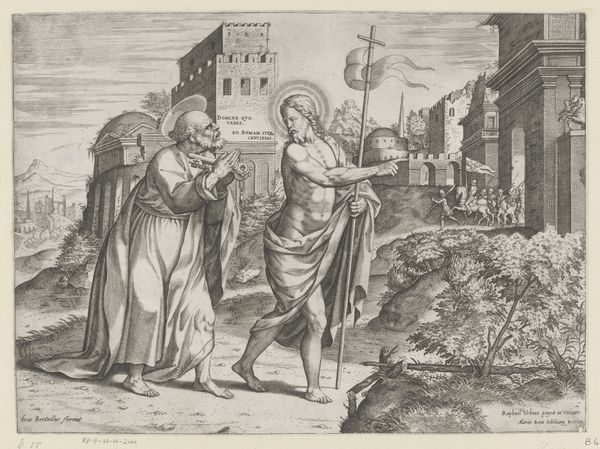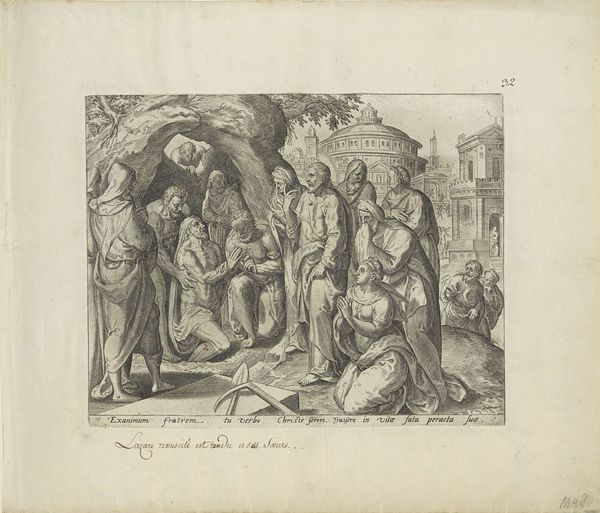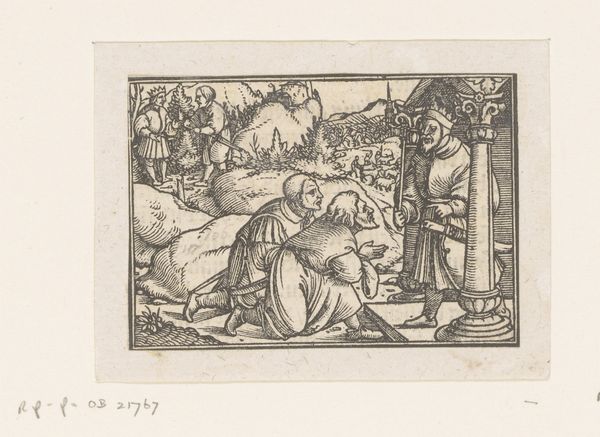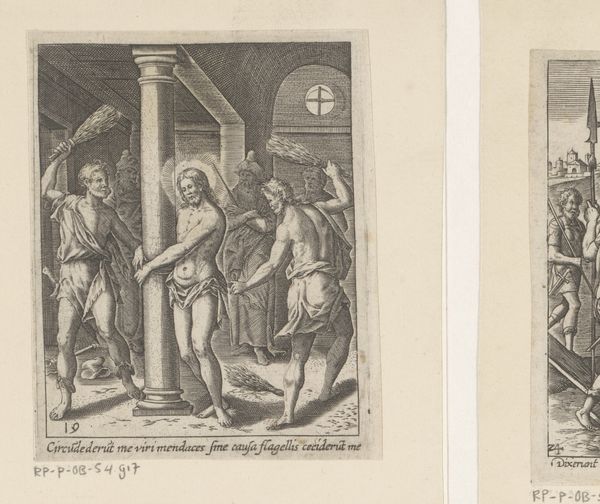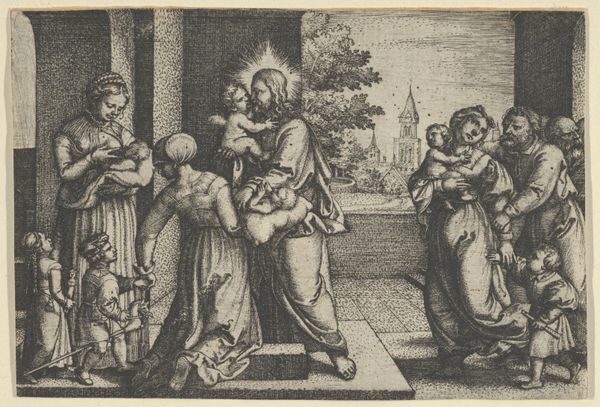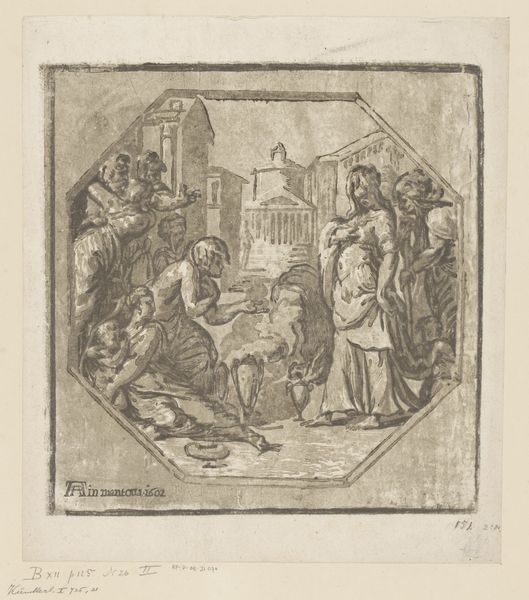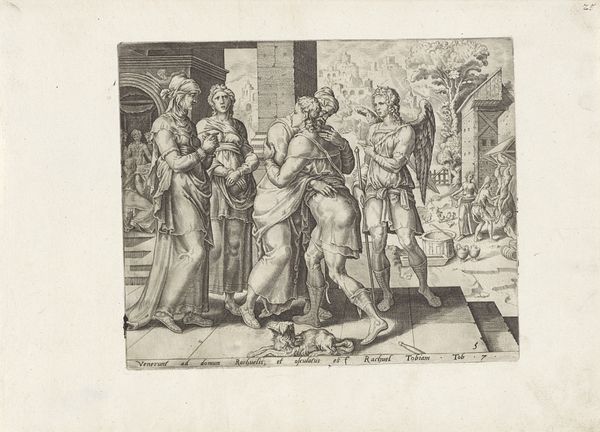
print, engraving
#
narrative-art
#
baroque
# print
#
figuration
#
history-painting
#
engraving
Dimensions: height 88 mm, width 71 mm
Copyright: Rijks Museum: Open Domain
Editor: Here we have an engraving titled "Visitatie," dating roughly from 1582 to 1671. It’s attributed to Heinrich Ulrich and is currently housed in the Rijksmuseum. The lines are so precise, giving the scene a real sense of weight, and I’m immediately drawn to the body language between the two women in the center. How do you interpret this work, especially within its historical context? Curator: Well, as a historian, I immediately see this print operating within a very specific cultural and religious framework. The Visitatie, or Visitation, is a key scene in Christian iconography: Mary's visit to her cousin Elizabeth, both pregnant and blessed in unusual circumstances. But Ulrich's choice to create this as a print tells us something about its intended audience and purpose. Editor: Meaning it was for wider distribution? Curator: Precisely. Prints made religious narratives more accessible. The market for these engravings was substantial; they were circulated among a growing middle class seeking accessible religious imagery. Look, for instance, at how Ulrich presents the figures—Mary is no ethereal being; she is grounded, substantial. And Elizabeth mirrors her in dress, even, it seems, almost in age, reflecting, maybe, more communal, earthly ideals than sublime religious doctrine. Do you notice, too, how much prominence the landscape behind has, and the architecture around? Editor: I do see that now. The architecture looks very secular and almost dominates. Curator: Which places the sacred meeting firmly within the confines of everyday life, influencing the experience of both a worshiper and collector within the home and as a citizen. What have you come away with reflecting upon all these facets? Editor: Thinking about this print not just as a depiction of a biblical event, but as an object designed to circulate specific religious and social ideals really shifts my understanding. Thanks! Curator: Exactly. Considering these engravings helps us understand how powerful institutions, like the church and the state, operated and disseminated ideals within their respective publics. It’s food for thought!
Comments
No comments
Be the first to comment and join the conversation on the ultimate creative platform.
